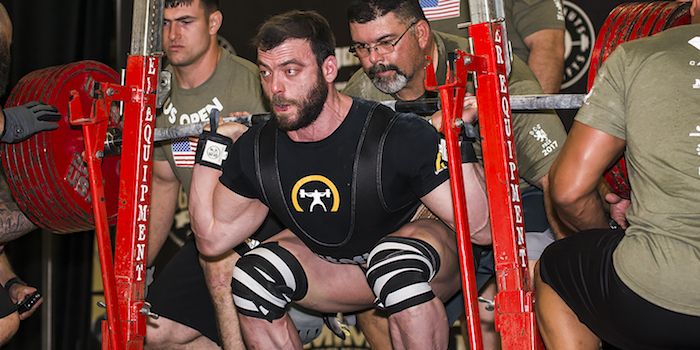
Well, the US Open is over, and after a few days of rest, it’s time to start getting stronger. I’m pretty excited about this offseason, because it’s the first time in a very long time that I don’t have a meet in mind, and so I have the luxury of taking a slow, productive approach to add real muscle and real strength. Meets are fun, and so it’s easy to get sucked into the cycle of going straight from one meet to the next. That’s not necessarily a bad thing -- competing is a skill, and it takes a lot of practice to become a good powerlifter (as opposed to a good gym lifter).
So I’ll be using my Think Strong program for the foreseeable future -- but tailored to address my own particular weak points. I’m pretty proud of how Think Strong explains how to customize the base program, because accounting for individual differences is critical to training success, and I get pretty frustrated with the sheer number of online “coaches” who just give all of their clients the same cookie-cutter program. That said, it’s still tricky to 1) identify your weaknesses and 2) turn those weaknesses into strengths.
My Weaknesses, and How I’m Turning Them Into Strengths
I’ve been lifting for quite a while, so my coach and I have a pretty good idea of what I need to improve. If you haven’t been lifting for very long, and your weaknesses aren’t so obvious, you probably shouldn’t worry about them. Focus on getting stronger all over before you start looking a sticking points or lagging muscles. That said, here’s where I fall short:
I need to practice squatting with wraps.
Generally, the squat technique a lifter uses with wraps will probably differ a bit from the technique they use in sleeves. When I’m using wraps, I cue myself to push into my knees, which helps me descend faster. In sleeves, I think more about using active dorsiflexion to begin the movement. It’s a subtle distinction, but one that makes a big difference, and I haven’t practiced the wrapped technique long enough to really feel comfortable with it.
So, I’ve picked up two new pairs of Elitefts knee wraps: the normal knee wraps, which I’ll use in light training, and the heavies, which I’ll use in medium-heavy training. For my work over 90%, I’ll be sticking with my all-time favorite wraps, the Kraits. By using increasingly aggressive wraps, I can practice the movement while still pushing my muscles hard enough to gain real strength.
For lifters just starting out with wraps, I recommend introducing them gradually until you’ve found your groove, and then only squatting in wraps until you’re fairly comfortable with them. Accordingly, I’ll be using wraps every time I squat (though I’ll still be doing my warmups and some backoff sets in sleeves).
RELATED: Could You Be Getting More Out of Your Knee Wraps?
I need to strengthen my shoulders and incorporate more dynamic effort work into my bench press training.
There’s not much to say here. It’s obvious that the bench is my weakest lift, and the weakest point on my bench is the midrange. Direct shoulder work and faster pressing is the obvious cure for that issue (and check out this free ebook if you have other weaknesses in your raw bench).
I need to work back into sumo deadlifting.
Shortly after I pulled 800 pounds for the first time -- using a sumo stance -- I developed some inner knee pain that really threw off my groove, and eventually prevented me from pulling sumo altogether. With a lot of help from Tammy and Kinetix Body Science here in Austin, I’ve learned to address that pain by strengthening my adductors. That’s great, because I can recover from sumo pulling much faster than conventional training; and heavy squats don’t detract from my sumo deadlift very much (which is very important in a meet).
So, just like with the knee wraps, I’ll be pulling sumo exclusively for a while, starting very light and working into moderate and then heavy weights. I don’t believe in ever adding weight quickly when making technique changes, even small ones, because it increases risk of injury and allows for fewer opportunities for making nuanced adjustments and building kinesthetic awareness of a new movement pattern. That said, I have good leverages for the deadlift and it’s always felt comfortable, so I should be back to speed with sumo pretty quickly.
What’s Next?
Well, that’s a good question. I’m still taking a few weeks before I commit to anything, but right now it’s a tossup between the USPA Southern Strength Showdown, which already has an intimidating roster (including my boy Joe Sullivan), or the SPF Reebok Record Breakers, which is one of the few big raw meets I haven’t tackled yet. I’d love some feedback -- what do y’all think is the better choice?









2 Comments